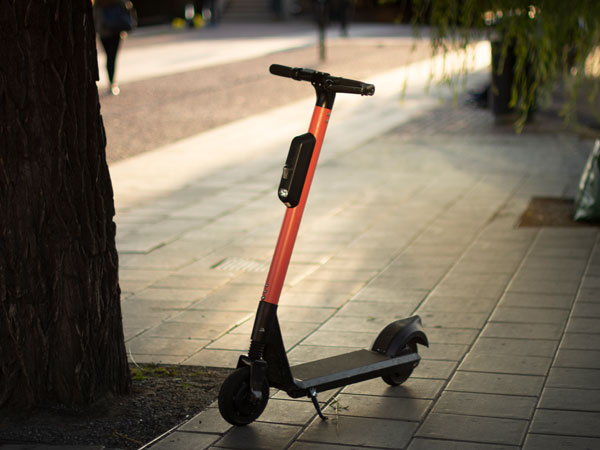Fast digital development is often considered as a tsunami, something you cannot control. But according to Claus Hedegaard Sørensen, Senior Research Leader at VTI, we can control it. “That is the main message in our report.”
Att styra det nya – Samhällets styrning av och med smart mobilitet [Governing the New: Governance of and with smart mobility] is a final report issued within the framework of K2, Sweden’s national centre for research and education on public transport, and funded by Vinnova.
The umbrella term smart mobility describes changes in the transport sector prompted by digitalisation, changes we are already witnessing and those the future holds.

The electric scooters on the streets of many cities fall within the scope of smart mobility, as do self-driving cars and buses and connected vehicles that can communicate with one another and with a traffic control centre.
“Smart mobility also encompasses car pooling, which is of course nothing new but is made easier by digitalisation,” says Claus Hedegaard Sørensen, who together with his colleagues in the project sees both positive and negative possible effects of smart mobility.
“One positive is that public transport can be complemented and expanded in a manner that better meets the needs of citizens. In this way, smart mobility can facilitate a modal split away from the private car, thus contributing to sustainable transport.”
That said, possible negative effects are that it becomes so attractive to travel door-to-door in your autonomous vehicle that other modes of transport are outcompeted, leading to more cars in our cities.
“The positive scenario I mentioned first will not come about if left only to the market”, emphasises Claus Hedegaard Sørensen. This is where political governance enters the scene.
Municipalities, regional authorities, and government agencies need to reflect on their roles and which resources they have – or do not have – at their disposal and, based on this, they must develop a conscious approach to smart mobility.
Smart mobility cannot be viewed solely from a technical perspective, it must be founded in democratic principles and steered towards societal goals, as the report says: “for example, based on the ambitions of municipal land use plans, regional development plans and infrastructure policy objectives set by the Swedish Parliament” (Quote from the report).
The researchers talk about four vital resources that public-sector stakeholders have at their disposal in governance processes: Nodality, Authority, Treasure and Organisations (NATO).
Claus Hedegaard Sørensen is keen to highlight nodality as being of particular importance, i.e. control over data. Anyone sitting on knowledge about citizens’ travel habits, for example, has considerable power.
“Then again, it is crucial that citizens are not subsumed into all of this as nothing more than ‘customers’. Citizens must be included in the development and decision-making, not simply subjected to it.”
K2 Outreach 2021:1: Att styra det nya – Samhällets styrning av och med smart mobilitet [Governing the New: Governance of and with smart mobility]. (In Swedish).
Text: Catarina Gisby/redakta
Translated by: Semantix AB

Contact:
Claus Hedegaard Sørensen
claus.h.sorensen@vti.se
VTI, Swedish National Road and Transport Research Institute






Follow us: